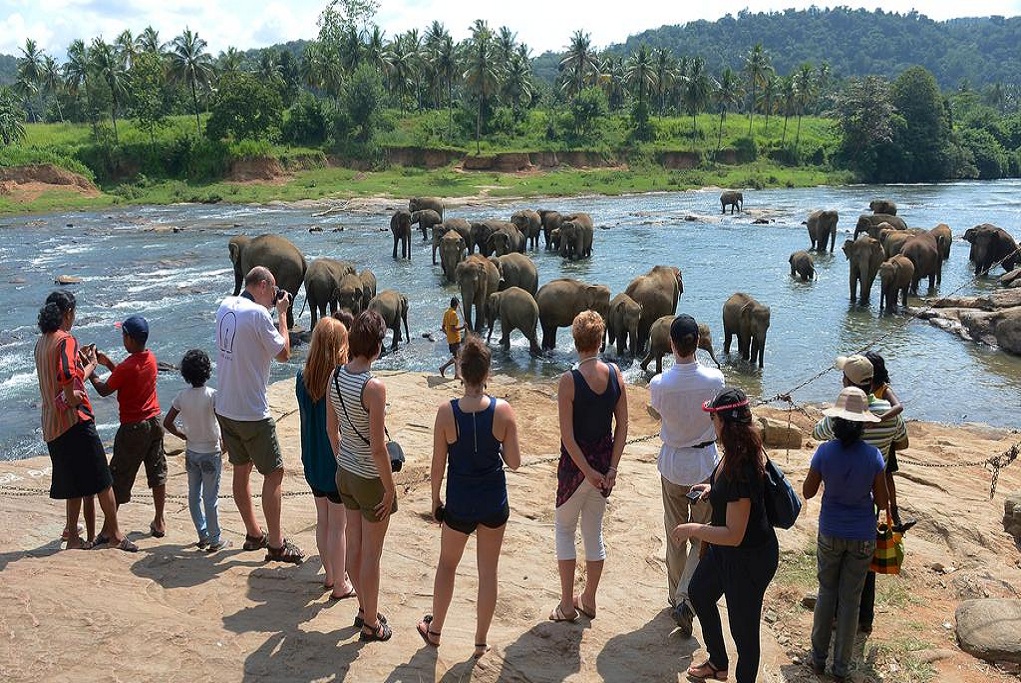Sri Lanka is indeed an exciting holiday destination in terms of the kind of landscapes, tropical weather, wildlife and hospitable people that it has to offer to vacationers.
An island nation located in the Indian Ocean claims a vastly diverse culture, mainly due to its long history with origins date all the way back to the 6th century BC. Buddhism was first introduced to Sri Lanka in 250 BC and some of the first Sinhalese kingdoms in the country are those of Anuradhapura and Polonnaruwa, which were gradually defeated to a Tamil Kingdom from south India during the 14th century.
Previously known as Ceylon, the country is a developing region in the global market and is perceived as a vibrant democracy and a stable geopolitical entity,
Presently, Sri Lanka is one of the evolving powers of South East Asia and the end of the civil war since 2009 has placed the country in a comfortable position, where it is rising in terms of growth and reconciliation.
Sri Lankan Community
- 76% of Sri Lankans are Sinhalese, a little over 11% are Tamils, 5% are Indian Tamils and the rest constitute of small ethnic communities such as Muslims, Burghers and Christians.
This mix of cultures gives Sri Lanka its colorful mosaic and is a unique point of attraction for the nation. The post war political dispensations have been successful in maintaining a stable economy in the country and working towards social harmony. Similar to the situation in South Africa, where misunderstandings prevailed for decades and a new chapter of reconciliation was opted for by the Black majority, Sri Lanka is also walking towards a path of reconciliation between Sinhalese and Tamil races.
Sri Lankan Economy
- Promising socio-economic indicators of Sri Lanka reveal a GDP growth rate of 4.6%
- The island nation boasts a literacy rate of approximately 92%
These scaling heights of success are visible in the high concentration of building infrastructure and sealing deals on new social contracts.
- The GDP per capita income of Lankans is going at $13000 (ppp) per year according to estimates from 2017.
- The economic configuration seems inclined towards the services sector. According to the local government:
- Agriculture = 7.8% of GDP
- Industry = 30.5% of GDP
- Services = 61.7% of GDP
- The demographics are evenly proportioned in agrarian and production sectors (28% and 25% respectively). The remaining 45% demographics are associated with the industry sector.
- Some of the major industries in Sri Lanka are:
- Agriculture
- Dairy
- Rubber
- Tea
- Coconuts
- Tobacco
- Other commodities
- Some of the service sectors that are in full bloom by catering to a growing population of about 25 million are as follows:
- Telecommunication
- Insurance
- Banking
- Tourism
- Shipping
- Clothing
- Textiles
- Cement
- Petroleum refining
- Information technology services
- Sri Lankan government statistics revealed that unemployment is at less than 4%.
After the end of the civil strife, special efforts are being made for bringing about a new balance in the economy. The government has passed an ambitious list of projects related to economic development, most of which are financed with the help of loans from Europe, China and other ASEAN countries.
The nation is also very much occupied with the gigantic task of rehabilitating and settling refugees that have been displaced during the war. In this task, the country eagerly looks up to the global community for a helping hand. A positive sign is that 95% of these displaced civilians have been resettled and the government has also released former LTTE members in hope of social reconciliation.
Productivity and International Trade
- Exports in Colombo amount to about $12 billion
- Imports are double; totaling to a staggering $24 billion
- External debt amounts to over $45 billion, which is about 80% of the country’s GDP (which amounts to about $82 billion)
Even with these figures, Sri Lanka is amongst the highest emerging markets. And for this reason, the country is under an IMF program for reforms – with an intention to sustain growth as well as maintain macroeconomic stability.
Sri Lanka Tourism
The biggest success factor for Sri Lanka is its potential for tourism. It is indeed a floating gem in the Indian Ocean with a range of landscapes such as arid plains, rainforests and sandy beaches.
- The coastline totals to more than 1300 kilometers
- The weather is a friendly tropical monsoon climate – which is why it is considered as a holiday destination for ‘all seasons’.
- Some of the best places to visit in Sri Lanka include the eight UNESCO World Heritage Sites.
Providing a pleasant fusion of geography and climate, along with herds of elephants, a significant concentration of wildlife and leopards, exotic beaches and scenic greenery makes Sri Lanka an appealing destination for tourism and investment.

